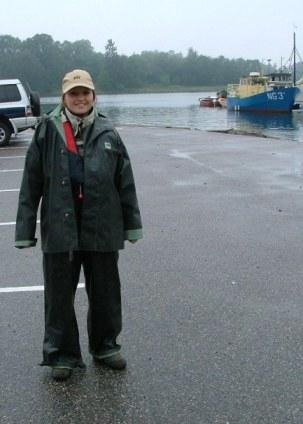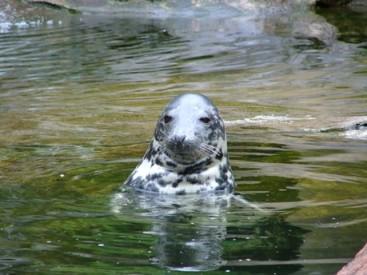
Hello!
My name is Jenny Kleiner and here you can read about my final thesis.
Here I am, ready for a rainy day at sea!
Abstract
Halichoerus grypus is casing problems to the fishermen when taking
their catch and causing damages to the fishing gears. The problem is
most widespread in the middle and northern parts of the Baltic Sea where
the H. grypus is most abundant. In recent years the population has
recovered from a large decline due to hunting and diseases caused by
pollutants. The recovery has resulted in an increase of the seal inflicted
damages for the fisheries. The aim of this project was to investigate if H.
grypus uses above water stimuli to locate baited buoys, representing
fishing gears. The experiment was conducted in two areas along the
Swedish east coast. Four different types of buoys were used, and it was
hypothesised that the number of encounters would increase with buoy
size. With this kind of knowledge it might be possible to develop new
fishing methods in order to decrease the catch and gear damages and also
decrease the number of seals drowned in fishing gears. Thirty-three
percent of the buoys were equipped with a camera to verify that it
actually was H. grypus that took the bait. The buoys were deployed in
suitable areas where seals were commonly seen. They buoys were
checked once a day and they were moved if the bait had been taken. The
result showed that the buoy size matters and larger buoys are more easily
discovered by seals.

Grey seal at Skansen Zoo
Responsible for this page:
Director of undergraduate studies Biology
Last updated:
06/21/05
